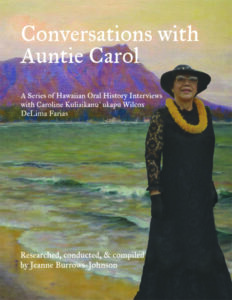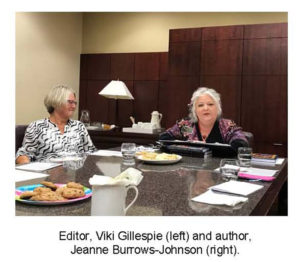
PRODUCING TRUE FACSIMILES OF INTERVIEWS
Few people willingly give up control of their personhood to allow a stranger to delve into their inner thoughts. But those private thoughts are what an effective writer must access to produce a true facsimile of each interview they conduct. For as a professional or even an amateur writer, your goal is to meet your listeners or readers expectations that they are sharing your sensory experience while gleaning the particulars of why the highlighted individual is worthy of their attention.
There are four statements I can make about my perspective on the interviewing process:
~ The interviewer has one chance to make a good first impression
~ The interviewer may not get another opportunity to interview their subject
~ Despite a subject’s agenda, the interview must be a record of fact
~ Regardless of the premise for an interview, the subject may become reluctant to speak about topics previously authorized for discussion
THE IMPORTANCE OF PREPARATION
In several blogs, I’ve stressed the importance of preparation to conduct both general and oral history interviews. In contrast, there are some writers who feel that research and other preparation is unnecessary, or even unwarranted. I strongly disagree. I believe research is vital to empowering your words in the interview process. It will also help establish your credibility as a wordsmith who has mastered the art and science of writing. In short, it’s one of the best ways of demonstrating your skill at the art of communication and making your subject trust you.
Contrary to the theory that “winging it” in an interview demonstrates you are a “common man,” and therefore likely to establish a connection with your interviewee, I’ve observed the results of people who conduct interviews without appropriate research. For when an interviewer demonstrates little knowledge of their subject, their interviewee may judge them inconsequential. If that is the case, responses to the interviewer’s questions may be superficial. In fact, the subject may be thinking, “If you don’t care enough to do your homework, why should I care about your project?” So I’ll just keep the kernels of my truth to myself until the right interviewer comes along.”
SUMMARIZING YOUR RESEARCH
By the time you’re ready to conduct a cogent interview, you should have completed a great deal of fact checking in several areas of your subject’s life, including:
~ The historical era of their life and the category of work they’ve performed
~ Their biography and career…as reported by them, and as available in public sources
~ Materials they’ve published, and speeches and interviews they’ve given previously
~ Comments their colleagues and other contemporaries have expressed about them
SHAPING YOUR QUESTIONS
The bulk of your questions will be determined by the purpose of your project. In some cases you’ll need to conduct interviews with multiple persons. By asking parallel questions of each, you can compare and contrast their views of the primary subject, as well as one another.
Regardless of whether there’s any obvious controversy you must address, beginning your interview with general questions about the unfolding of the subject’s life, can assist in putting them at ease…if their mental processes are fully functioning and there are no hidden elements in their early life.
ASK QUESTIONS CHRONOLOGICALLY
By delivering the early portion of your questions chronologically, your interviewee can mentally relive moments with which they should be comfortable. Additionally, taking them through the recognizable patterns of the decades of their life may trigger remembrance of small details. This will not only enhance the interview itself, but also add color to your subsequent reporting of the event. This can, of course, lead to some sidetracking, but you should be able to steer the conversation back to the key points you need to cover.
Prior to, or during the interview, you may uncover facts about your subject’s life and work that are at odds with information the person has released in the past. In this case, you’ll have to decide whether to directly question these inconsistencies. Of course, you’ll want to keep in mind that true or false, the opinions of others may have colored the public record. Also, the perspectives of most people change with time and life experience. And, whether we like to admit it or not, everyone has gaps in their memory, without necessarily being conscious of it.
APPROACHING THE INTERVIEW
It’s nearly show time. That’s right. I said show time. While serious scholars and journalists may dislike hearing me say it, an interview is usually a semi-public performance. Unlike a play, the dialogue is not set in stone; unlike an evening at an improv theatre, it’s not without direction and form—for that’s your job. But like a play on Broadway, it will be frozen in time, even if you conduct subsequent interviews.
LOCATION OF THE INTERVIEW
It’s been my experience that interviewees often set and control the location of the interviews they grant. This may not be the case for broadcast media and bloggers with sets in which the subject is expected to appear, but you are probably not working in these situations. Admittedly, it’s best to conduct an interview at a site to which you’re both agreeable, but sometimes you must accept interviewing your subject in their office, home or other location of their choice. Nevertheless, there are things you can do to balance the situation so that you’re able to subtly declare your professional standing, while still putting the person at ease.
There are many authoring strategies that can help to distinguish your work as an interviewer. Establishing a good rapport can be the key to making the interviewee trust you with the information they’re imparting. To do this, you might bring something with you to enhance the experience. This could be an edible item, or, if you know they are fond of a particular author, you might obtain a copy of that writer’s work to share with your subject. Please note that I’m not suggesting you spend a significant sum of money to buy your subject’s cooperation. But small acts of kindness can help warm the atmosphere, demonstrate the thoroughness of your preparation, and make the entire experience positively memorable for both of you.
INTERVIEWER ANXIETIES
Anxiety will undoubtedly arise, regardless of your preparation. Despite previous contact you may have had with a subject, being in their presence (even by video conferencing or telephone) changes the balance of your relationship. There is another factor that may detract from your rapport with your interviewee: If there’s an aspect of their lives that makes them suspect in the eyes of the public, they may be hesitant about granting you an interview. They may be apprehensive about information you may have uncovered already…or what they might reveal in conversation with you.
ATMOSPHERE OF THE INTERVIEW
Even when you have secured the location for holding the event, you cannot be certain of being able to completely control the environment.
~ Despite previous agreement, additional people may be present during the event
~ As recording devices can fail, carry a back-up unit, cordage and microphones with you
~ Regardless of their response, your subject may be distracted by ringing telephones and other interruptions
As you set up your equipment, be aware that recognition of the permanency of the record of their interview may be upsetting to your subject. Even if you have provided them with a copy of your primary questions, they may dislike seeing the list set out before them. They may also have negative feelings about seeing any reference notes you’ve brought. But since such materials should be in easily read styles and sizes of fonts, you’ll be able to quickly reference pertinent facts, while maintaining eye contact and keeping the dialogue between you as natural as possible.
EBB AND FLOW OF THE INTERVIEW
Establishing and maintaining a smooth flow of conversation is a primary goal in the interviewing process. Regardless of whether your personal views are in accord with those of your interviewee, it’s important to approach what they have to say with a calm, if not fully open mind. This does not mean that you have to forfeit your role as the honest broker of truth. However, you can adjust your personal style of behavior and other elements to maximize a positive atmosphere. After all, as in any natural conversation, your subject will periodically lead the discussion. That’s fine as long as they do not deviate greatly from the purpose of your dialogue, or delve into personal details of your life.
SHIFTS DURING THE INTERVIEW
After opening pleasantries, you can help direct the flow of the interview by verifying the amount of time you’ll have with your subject. This establishes a guideline for both parties and should make your periodic redirection of topic easier to explain.
Although you’re guiding the overall direction of the conversation, information will arise that may surprise you, or at least call for cursory examination. This may occur because the man or woman to whom you are speaking may have talking points of their own that they wish addressed. If that’s so, let them express their concerns, and then try to deftly redirect them to the specific information you need in order to complete your project.
THE EDITORIAL PROCESS
Sometimes an author feels stressed about the relationship between the creative process and editing. As you review an interview, you will not only want to envision how you will shape an accurate account of the event that reflects truly inspired writing as well. One thing that can help you achieve this dual pronged goal is to remember that the way in which you report your findings may be wholly different than the substance and sequence of the questions you posed.
For example, if you’re part of an oral history project, there may be a specific format for you to follow. This generates a record that harmonizes with the results of other interviewers within the larger body of work. Typically you’ll prepare a transcript of the actual dialogue between you and the subject—often with punctuation or other markings to indicate accents, pauses, stresses, and other notable features of your conversation. You may also write an introductory passage explaining your methods of preparation and your evaluation of the results you’ve achieved.
If you’re working on assignment for a media outlet, you might have the opportunity to write a personable article containing both dialogue and narrative prose. In this case, you may be allowed to offer your candid view of the person you’ve studied. Be aware, if you’re working as a freelance researcher and writer, you may need to prepare multiple versions of your report in order to secure one or more appropriate outlets for its broadcast or publication. I should note that there are situations when an interview will be available to only a select audience, or may be held in private for release at a future time.
As you finalize your work on an interview, you’ll want to remember that in this day of permanency in data recording and retrieval, the words you shape after the interview will live as long as the event itself.
Wishing you the best in your creative endeavors,
Jeanne Burrows-Johnson, author, consultant, and motivational speaker
For further information on interviews and oral histories see:
Overview of Interview and Oral History Projects, June 2015
Researching for Interviews, July 2015
Conducting Interviews, May 2016
After the Interview, August 2017
To learn more about the award-winning Natalie Seachrist Hawaiian Mysteries, including Murders of Conveyance [Winner, Fiction Adventure-Drama, 2019 New Mexico-Arizona Book Awards] and other projects, please drop in at my author’s website JeanneBurrows-Johnson.com. You’ll even find Island Recipes that might inspire your culinary creativity.
For more ideas to strengthen your Wordpower© and branding, please visit: Imaginings Wordpower and Design Consultation.
Follow Me On:
Amazon, Arizona Authors Association, Apple Books,
Audible, Authors Den, Barnes and Noble, Blogarama, Book Bub,
Cozy Mysteries-Unlimited, Facebook, Good Reads, Hometown Reads
Book sellers may contact book distributors such as:
Baker & Taylor, Follett, IPG, Ingram, Mackin, Midpoint, TitleWave





